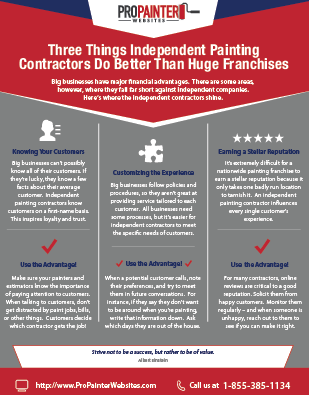Figure Out How Seasonal Elements Influence Industrial Exterior Paint Success And Find The Most Effective Times To Make Sure Long Lasting Results For Your Project
Figure Out How Seasonal Elements Influence Industrial Exterior Paint Success And Find The Most Effective Times To Make Sure Long Lasting Results For Your Project
Blog Article
Created By-Doherty Celik
When you're planning a commercial external paint job, seasonal variables can make or damage your outcomes. You'll intend to think about just how temperature level and moisture influence paint application and drying out times. Picking the best season can guarantee your paint adheres effectively and lasts much longer. However which seasons are really the best for this sort of job? Let's discover visit the up coming article that can influence your job's success.
The Impact of Temperature Level on Paint Application
When you're preparing an industrial outside paint task, the temperature level can considerably influence just how well the paint sticks and dries out.
Preferably, you wish to paint when temperatures range between 50 ° F and 85 ° F. If it's too cold, the paint may not cure effectively, bring about issues like peeling off or breaking.
On the other hand, if it's also hot, the paint can dry out too promptly, protecting against proper bond and resulting in an unequal coating.
You must likewise take into consideration the time of day; early morning or late afternoon supplies cooler temperature levels, which can be a lot more favorable.
Always inspect the producer's referrals for the certain paint you're making use of, as they typically offer advice on the optimal temperature range for optimum outcomes.
Moisture and Its Impact on Drying Times
Temperature level isn't the only ecological element that influences your business exterior painting project; moisture plays a substantial duty too. navigate to this site can reduce drying out times dramatically, affecting the general high quality of your paint work.
When the air is saturated with dampness, the paint takes longer to cure, which can lead to concerns like inadequate bond and a higher threat of mildew growth. If you're painting on an especially moist day, be prepared for extensive wait times in between coats.
It's crucial to keep an eye on local climate condition and plan appropriately. Ideally, go for humidity levels between 40% and 70% for optimum drying out.
Keeping these consider mind ensures your project remains on track and delivers a long-term surface.
Best Seasons for Commercial Outside Paint Projects
What's the very best season for your industrial exterior painting jobs?
Spring and early fall are usually your best bets. Throughout these periods, temperature levels are light, and moisture levels are usually lower, developing excellent conditions for paint application and drying out.
Prevent summertime's intense heat, which can create paint to completely dry also promptly, causing poor attachment and coating. Similarly, winter's cool temperatures can prevent correct drying and treating, running the risk of the long life of your paint job.
Aim for days with temperature levels in between 50 ° F and 85 ° F for ideal outcomes. Remember to examine the local weather forecast for rainfall, as wet conditions can spoil your task.
Planning around these factors guarantees your paint job runs smoothly and lasts longer.
Conclusion
Finally, planning your business outside paint projects around seasonal factors to consider can make a substantial distinction in the end result. By organizing work during the excellent temperatures and humidity degrees, you'll ensure much better adhesion and drying out times. Keep in mind to watch on regional weather prediction and choose the correct time of year-- springtime and early loss are your best options. Taking reviews for house painters will help you accomplish a long lasting and expert finish that lasts.
